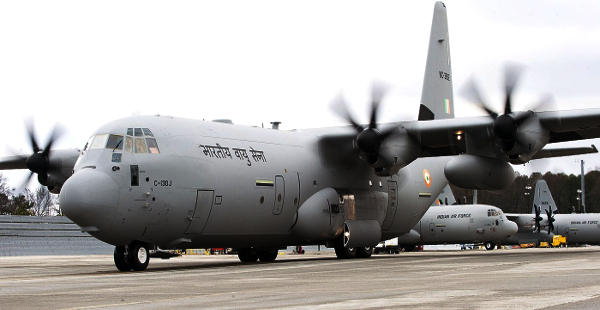The Indian Air Force, in collaboration with the Indian Space Research Organisation (ISRO), is developing a real time aircraft tracking system (RTATS) that will be retrofitted in its transport fleet.
The technical specifications for the system have been framed by ISRO and the development and fabrication of the prototypes would be done by the industry, according to IAF sources. The trials and evaluation would be done by the IAF on AN-32 aircraft at one of its bases.
The RTATS is required to be compatible with the Global Navigation Satellite System of India’s GAGAN regional satellite navigation system and Navigation with Indian Constellation (NavIC), as well as America’s Global Positioning System, using both standard positioning services as well as restricted services.
GAGAN was conceived by the Ministry of Civil Aviation for management and surveillance of the Indian airspace, while NavIC has a wider footprint, covering south Asia, south-east Asia, China, the Middle East, south-western Europe and the Indian Ocean region, including the eastern coast of Africa and Western Australia. Both these systems have been developed by ISRO.
Many military as well as civilian organisations across the globe use various kinds of RTATS for tracking aircraft movements as well as managing airspace. Contemporary tracking systems use a network of satellites and ground receiving stations. Flight data transmitted from an aircraft is captured by an overhead satellite and beamed to the earth, where it is recorded and disseminated to the stakeholders. It can also be used to transmit distress signals in an emergency.
The IAF is also equipping some of its larger transport aircraft with the Automatic Dependent Surveillance-Broadcast (ADS-B), a new generation, highly accurate satellite-based aircraft positioning and tracking system, the use of which has already become mandatory in some countries.
Real-time tracking using ADS-B and other open source information is also available to aviation enthusiasts and the general public though many websites and mobile applications. These give out an aircraft’s flight path, location, speed and altitude. Though primarily focused on civilian aircraft, some military aircraft also show up on these applications.
The IAF had earlier installed emergency beacons in some of its transport planes, but these are activated only in case of an accident to transmit the location of the site and do not beam flight data.
Source: TribuneIndia
You may also like
-
IAF Aircraft Set Course For Exercise Eastern Bridge VII At Oman
-
IAF Set To Host The Indian Defence Aviation Exposition-II At Jodhpur
-
Defence Secretary to co-chair 5th India-Philippines Joint Defence Cooperation Committee meeting in Manila
-
Simultaneous Launch Of ‘malpe And Mulki’, Fourth And Fifth Ships Of Asw Swc (Csl) Project
-
Aatmanirbharta in Defence: MoD signs Contract with HAL for 240 AL-31FP Aero Engines for Su-30MKI Aircraft
